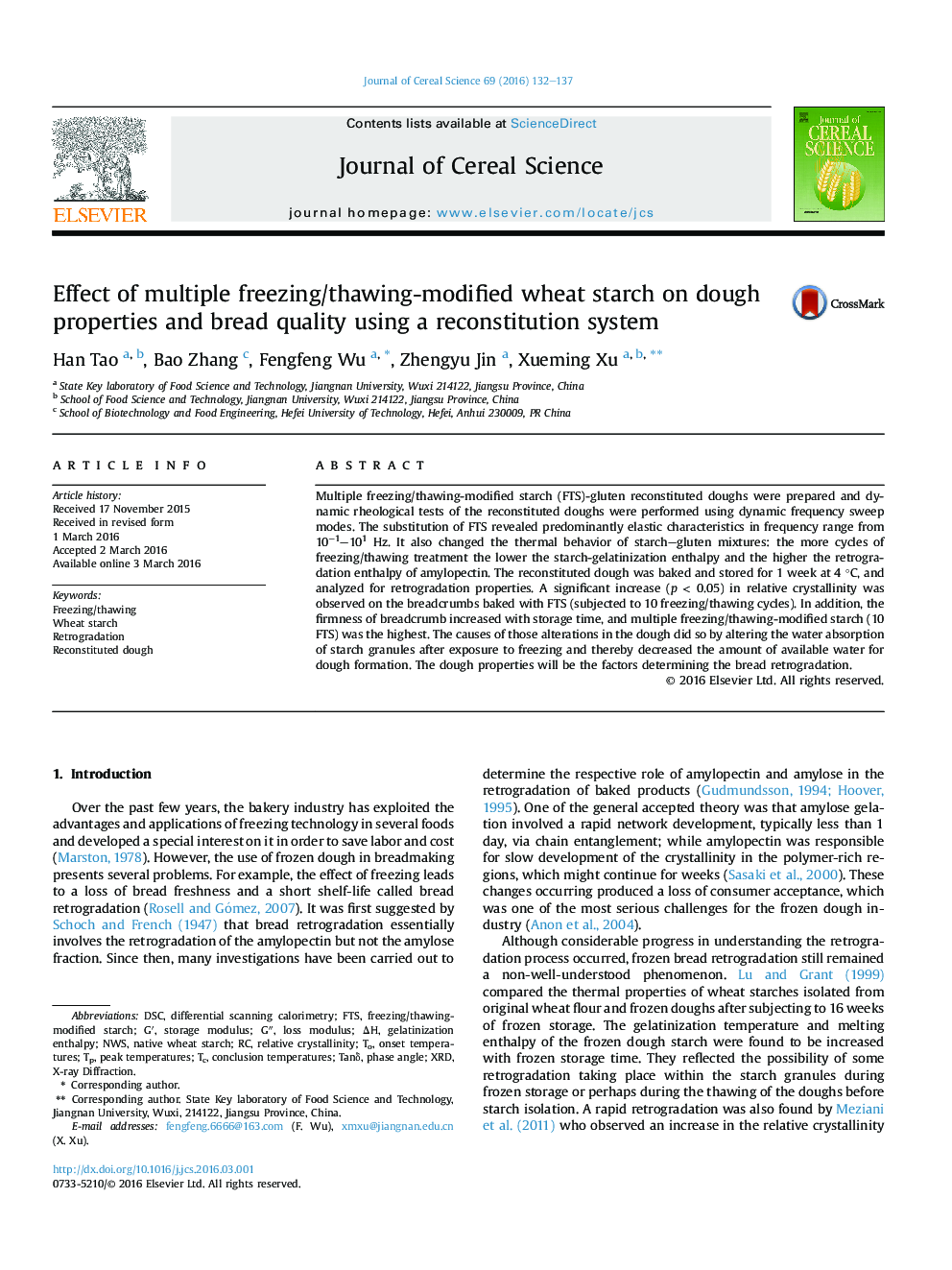| کد مقاله | کد نشریه | سال انتشار | مقاله انگلیسی | نسخه تمام متن |
|---|---|---|---|---|
| 4515574 | 1624893 | 2016 | 6 صفحه PDF | دانلود رایگان |
• An increase in dynamic modulus was observed in dough containing freezing-modified starch.
• The addition of treated starch changed the thermal behavior for reconstituted doughs.
• Crumb relative crystallinity and texture were affected in samples with treated starch.
• Modified starch influenced the bread staling through decreasing water availability.
Multiple freezing/thawing-modified starch (FTS)-gluten reconstituted doughs were prepared and dynamic rheological tests of the reconstituted doughs were performed using dynamic frequency sweep modes. The substitution of FTS revealed predominantly elastic characteristics in frequency range from 10−1–101 Hz. It also changed the thermal behavior of starch–gluten mixtures: the more cycles of freezing/thawing treatment the lower the starch-gelatinization enthalpy and the higher the retrogradation enthalpy of amylopectin. The reconstituted dough was baked and stored for 1 week at 4 °C, and analyzed for retrogradation properties. A significant increase (p < 0.05) in relative crystallinity was observed on the breadcrumbs baked with FTS (subjected to 10 freezing/thawing cycles). In addition, the firmness of breadcrumb increased with storage time, and multiple freezing/thawing-modified starch (10 FTS) was the highest. The causes of those alterations in the dough did so by altering the water absorption of starch granules after exposure to freezing and thereby decreased the amount of available water for dough formation. The dough properties will be the factors determining the bread retrogradation.
Journal: Journal of Cereal Science - Volume 69, May 2016, Pages 132–137
